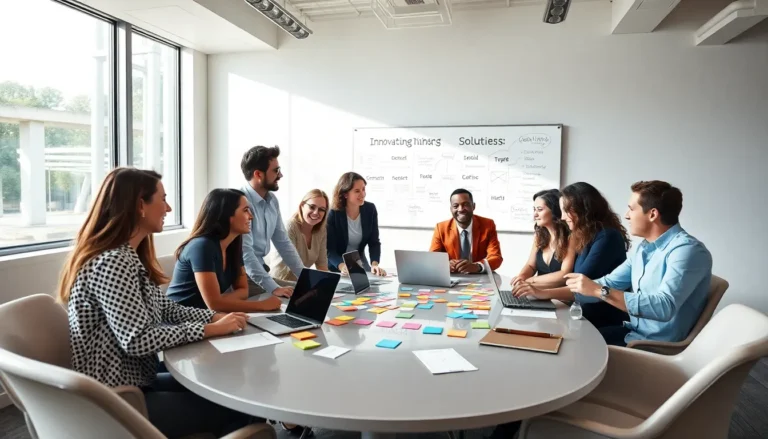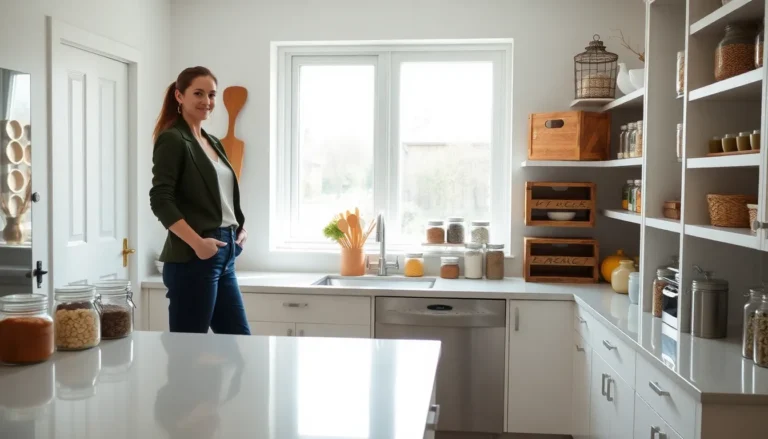Table of Contents
ToggleCreative thinking isn’t just for artists and inventors. It’s a vital skill in today’s fast-paced world where complex problems pop up like weeds in a garden. Picture it: you’re at work, faced with a challenge that seems insurmountable. What do you do? You channel your inner creative genius. In this text, we’ll explore how creative thinking can transform problem-solving into an adventure, making it not only effective but also a bit amusing along the way. Get ready to boost your brainpower and tackle challenges like a pro.
The Importance Of Creative Thinking In Problem Solving

Creative thinking is the secret sauce for effective problem solving. In a world where innovation drives success, being able to think outside the box is crucial. It enables individuals and teams to generate unique solutions and outlooks on familiar dilemmas. Companies like Google and Apple thrive on cultivating a culture of creativity, leading them to groundbreaking products. From brainstorming sessions to pivotal team meetings, channels for creative thinking can often lead to the most unexpected, yet effective, solutions. Also, it instills a sense of flexibility. Problems are rarely one-dimensional, but creative thinking provides the ability to view challenges from multiple angles, facilitating better decision making.
Understanding The Creative Process
The creative process typically unfolds in several stages: preparation, incubation, illumination, and verification. First comes preparation, where the problem is identified and information collected. This is essentially a research phase, where one dives into every aspect of the issue. Next, during incubation, the brain takes a break, allowing ideas to marinate. This stage often leads to those ‘ah-ha.’ moments that come while showering or walking. Then arrives illumination, when ideas start to crystallize, and creative solutions appear. Finally, verification ensures that the idea can be implemented effectively. This structured approach fosters creativity, helping individuals harness their innovative potential.
Techniques To Enhance Creative Thinking
Several techniques can supercharge creative thinking. Mind mapping is a popular method that visually organizes thoughts, connecting ideas in a free-flowing manner. Another technique is lateral thinking, which trains the brain to explore alternatives and challenge conventional wisdom. Brainstorming sessions, where no idea is too outrageous, can unleash wild solutions from the depths of someone’s imagination. And don’t forget about playing games. Engaging in puzzles or creative challenges encourages cognitive flexibility, making problem-solving feel less like a chore and more like a stimulating adventure. The more diverse the methods, the more creative the solutions.
Applying Creative Thinking To Problem Solving
Applying creative thinking to problem solving involves melding innovation with practicality. For instance, when faced with a drop in sales, a business might employ creative strategies like rebranding or even a loyalty program. These approaches require thinking beyond traditional sales tactics. Besides, integrating techniques such as design thinking can guide teams through a user-centered methodology, ensuring that solutions not only solve problems but resonate with the intended audience. Sometimes, the best answers lie in recognizing the human aspects, what users feel and experience. This perspective allows for thorough, relatable solutions that can make all the difference.
Overcoming Barriers To Creative Thinking
Even the most creative minds encounter barriers. Common obstacles include fear of failure, rigid thinking, and lack of time. Overcoming these challenges begins with fostering an open mindset. Encouraging experimentation creates an environment where mistakes don’t lead to downfalls but are viewed as learning opportunities. Also, flexibility plays a key role. Individuals should be encouraged to explore various approaches rather than sticking to one rigid method. Time can also be managed effectively by allotting dedicated moments specifically for creative thinking, ensuring it doesn’t fall by the wayside in the busyness of the day. Reducing anxiety around expectations can also liberate the creative brain.
Real-World Examples Of Creative Problem Solving
Real-world applications of creative problem-solving can be found across industries. Take the case of Coca-Cola, facing stagnation in a saturated market. They innovated with new flavors and sustainability initiatives, capturing new segments of consumers and enhancing their brand image. In education, schools employ creative programs to address student disengagement, integrating technology and interactive projects that inspire learning. Companies like IDEO have popularized the design thinking process, helping organizations like Bank of America develop user-friendly banking products. Each example emphasizes that creativity isn’t limited to artists: it’s essential in every field.







